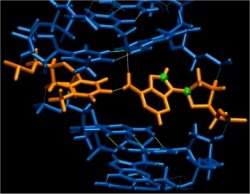A biossegurança e seus diversos aspectos são o tema do livro Biossegurança: uma abordagem multidisciplinar, que teve sua segunda edição, revista e ampliada, lançada pela Editora Fiocruz. A obra reúne artigos de 34 autores da Fiocruz e de outras instituições e é organizada pelos pesquisadores Silvio Valle, da Escola Politécnica de Saúde Joaquim Venâncio (EPSJV), e Pedro Teixeira, da Escola Nacional de Saúde Pública (Ensp), duas unidades da Fundação. O livro, que foi a primeira publicação brasileira sobre biossegurança, teve mais de 5 mil exemplares vendidos e traz em sua segunda edição novos capítulos e atualizações que incluem temas relacionados aos avanços tecnológicos dos últimos anos.
 |
| O livro trata das principais questões ligadas aos riscos – biológicos, químicos e radiológicos –, da metodologia para a criação de mapas de riscos, segurança em biotérios, ergonomia e biossegurança em laboratórios, política de biossegurança, biotecnologia e doenças emergentes |
Biossegurança é o conjunto de ações voltadas para a prevenção, minimização ou eliminação de riscos inerentes às atividades de pesquisa, produção, ensino, desenvolvimento tecnológico e prestação de serviços – riscos que podem comprometer a saúde do homem, dos animais, do meio ambiente ou a qualidade dos trabalhos desenvolvidos. Essa definição, publicada na primeira edição do livro, em 1996, foi depois adotada pela Fiocruz como oficial para a instituição.
Um dos novos capítulos do livro é o que trata das aplicações da internet em biossegurança e traz um roteiro com informações sobre os principais sites da área de biossegurança, além de dicas sobre mecanismos e ferramentas de busca na internet de artigos científicos, dissertações e teses sobre o tema. “Hoje, todos procuram a internet para obter informações, então selecionamos sites confiáveis para que as pessoas encontrem mais rápido, e com credibilidade, as informações sobre biossegurança”, explica Valle.
Outro capítulo atualizado é o que aborda os acidentes em unidades de assistência médica e a legislação sobre o tema no Brasil e no mundo. O capítulo também traz um roteiro de como se faz a notificação desses acidentes, além da importância da notificação para o planejamento de ações na área. “Na primeira edição esse capítulo tratava apenas de acidentes em laboratórios. Na nova edição, ampliamos o foco para as unidades de assistência médica, inclusive às Unidades de Pronto Atendimento (UPAs), que fazem serviços de diversos tipos de unidades, como postos de saúde, emergência e hospitais”, diz Silvio.
Biossegurança: uma abordagem multidisciplinar aborda desde a história das revoluções sanitárias, que levaram a Humanidade a enfrentar epidemias e desenvolver as noções de transmissão, contágio e prevenção de doenças, até questões atuais das últimas descobertas científicas e tecnológicas sobre biossegurança. Entre outros assuntos, o livro trata das principais questões ligadas aos riscos – biológicos, químicos e radiológicos –, da metodologia para a criação de mapas de riscos, segurança em biotérios, ergonomia e biossegurança em laboratórios, política de biossegurança, biotecnologia e doenças emergentes.
ServiçoBiossegurança: uma abordagem multidisciplinar
Organizadores: Pedro Teixeira e Silvio Valle
Páginas: 442
Preço: R$ 64
Para comprar, acesse o site da Editora Fiocruz.
Organizadores: Pedro Teixeira e Silvio Valle
Páginas: 442
Preço: R$ 64
Para comprar, acesse o site da Editora Fiocruz.




